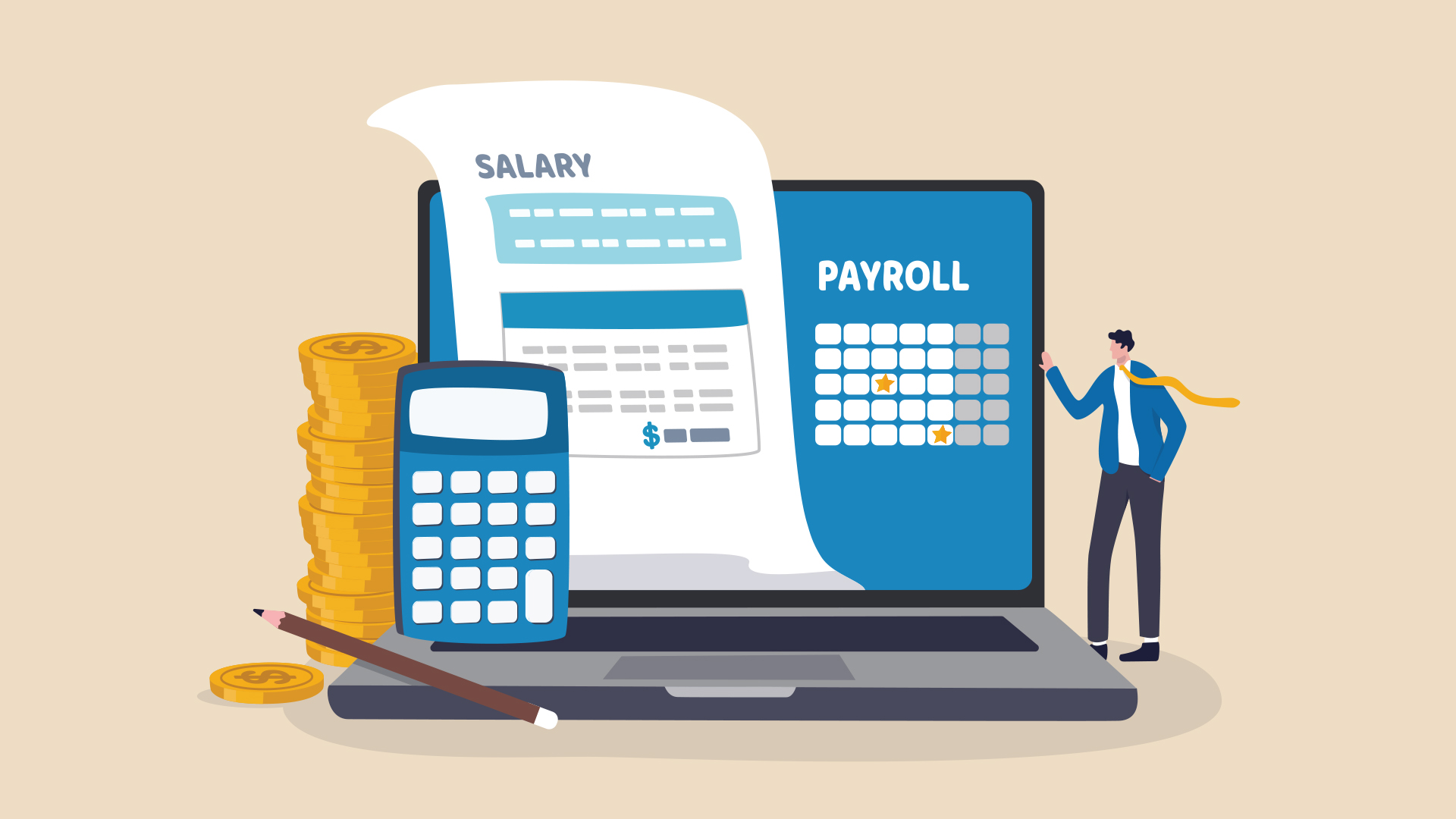
No matter how big or small the business, there’s no escaping the necessary payroll calculation processes. You do have options. You can outsource to third-party professionals or you can devote an in-house team to data entry and sums.
The problem with outsourcing is that it’s expensive. The problem with an in-house team is that it’s time-consuming (and also expensive). So, what about a third option?
With payroll automation, you can get the job done with just a few in-house staff members. Payroll software significantly reduces the complexity and workload associated with payroll, making it accessible even to small businesses with limited staff and resources.
What is payroll automation?
Payroll involves calculating earnings and withholdings, distributing paychecks and employee wages, and keeping HMRC up-to-date. All in all, this can mean a lot of manual data entry.
For small and medium enterprises, automating time-consuming processes is a must. You don’t want to waste time and resources on repetitive manual tasks which do not directly relate to your business aims. This is where automation comes in.
Payroll automation means using software to help and manage all aspects of payroll processing. Payroll software may handle tasks like paying employees, submitting information and payments to HMRC, generating reports and calculating pension contributions.
9 benefits of payroll automation software
1. Saves time
Manually processing payroll is a time-consuming endeavour. Even if you have a smaller team, you still need to handle multiple tasks and calculations. You’re dealing with varying types of employee paychecks, accessing spreadsheets, working out taxes, exporting data, and calculating gross and net pay. For more information on this read: what does gross pay mean?
Rather than doing these tasks by hand, it makes sense to use software which can perform all payroll-related functions automatically – freeing you and your team up for more important pursuits.
2. Saves money
Automation is often the answer to cutting costs. In customer service for example, you might launch an SMS answering service using conversational AI rather than hiring live agents to wait on call 24 hours a day. The same can be applied to HR functions.
Small businesses generally don’t want to invest in a full-on in-house finance team. Equally, outsourcing to a third-party provider can be costly. The most cost-efficient option, then, is to invest in automation. This way, you can keep your team small and in-house. Employees will not be working long hours on admin tasks, but overseeing payroll from above, while automation software handles the more tedious data entry and extrapolation.
3. Ensures accurate pay
Automation ensures that employees are paid accurately every time. By using payroll automation software, you can guarantee that workers are paid on time on the specified day and that all deductions or additions are calculated accurately.
Paying employees the right amount on the right day is an important way to demonstrate respect. Constantly leaving your team waiting around for late payments may make them less likely to stay with the company.
4. Gives power to your employees
Many payroll automation software platforms come with self-service options – meaning that employees can log in and access their information without having to ask somebody else for it. This means easy access to payslips, annual leave entitlements, and performance reviews.
5. Lowers the chance of human error
The definition of net pay is the amount of money which the employee goes home with after taxes and other deductions. When working out how much this figure should be, however, there is plenty of room for mistakes.
With manual data entry, calculating overtime rates, and staying on top of changing regulations and tax requirements – you have a lot on your plate. Payroll automation limits the likelihood of human error in all of these areas, meaning fewer (potentially very expensive) mistakes.
6. Automated regulatory compliance
Compliance is another issue which can cost SMBs a great deal of time to get right. Without automation, teams have to manually submit the required information and payments to HMRC – and they also have to worry about accidental errors in these submissions. Payroll automation takes the stress and guesswork away by ensuring that RTI submissions and payments are made to HMRC on a specific day each month. Regulatory compliance is therefore ensured, so there is no risk of penalties over late payments.
Payroll software also typically tracks important processes and stores tax-relevant details in a compliant way. As a result, the organisation is well prepared for the possibility of a smart audit on any given day.
7. Greater data visibility
Payroll software is able to generate insights and sales reports based on the data it holds about your business and its finances. This allows HR and finance teams an unprecedented level of insight into financial and employee data. Rather than engaging in a drawn-out back-and-forth with an accountant to track down the required information, you can generate a detailed report in seconds. Tools like an online pay stub generator can also help small businesses deliver professional documents while tracking compensation data with greater ease.
This level of visibility empowers managers to make solid, data-driven business decisions.
8. Increased security
It’s crucial to keep employee payroll data safe from unauthorised access. The legacy approach of keeping confidential information in printed spreadsheets and physical copies of documents, then, is not only outdated: it poses a significant security risk.
Payroll software typically uses encryption, ensuring that confidential data is protected at all times.
9. Payroll automation software is easy to use
Payroll software tends to be easy to use and you can easily train your in-house employees to be proficient with the automation system of your choice.
What should you look for in an automated payroll system? Well, every company will have different priorities. Generally, you want software which comes with employee self-service options, tax filing, PTO tracking capabilities, time tracking, and same-day direct deposit.
Ideally, your payroll software should also be able to integrate with existing systems used by your business. For example, if you’re already using HR and productivity software, you don’t want to keep switching between that and your payroll software: the two should be compatible. The same goes if you are using a customer relationship management (CRM) solution.
Final thoughts
There’s no avoiding payroll, whether you’re a small business or large. However, with payroll automation, the task is significantly faster, more cost-efficient, and more accurate. As well as benefiting your employees, this organised approach to payment is also great for business.







